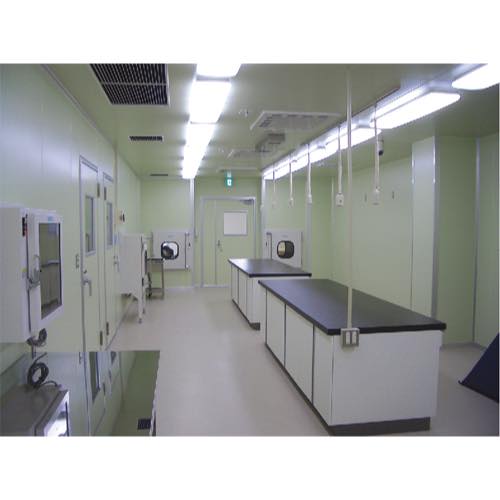Cleanroom ⁄ BSL-3 ⁄ CPF
It is not limited to dust. Hospitals, for example, require sterile environments. Food plants are similar and also need to control temperature and humidity.
In order to create these environments, cleanrooms are capable of reducing airborne particles and controlling temperature, humidity, air pressure, trace gas components, static electricity, micro-vibrations, electromagnetic waves and more.
On the other hand, handling pathogenic bacteria and recombinants DNA requires a room that possesses negative pressure in comparison to the surrounding environment and that is so gas-tight that microbe will not be leaked externally. These are called biosafety rooms (BSL-3). And CPFs are used when conducting cell processing of iPS cells, etc.
The Main Features of Our Cleanroom ⁄ BSL-3 ⁄ CPF
- We offer optimal designs in accordance with customer requests.
- We handle all aspects of the process from design through to construction, post-completion inspections and validation.
- We are devoted to providing follow-up services, including regular post-installation inspections.
Cleanroom ⁄ BSL-3 ⁄ CPF Applications
The purpose of a Cleanroom is to reduce airborne dust and fine particles and to suppress the propagation of germs.
Cleanrooms are widely used in plants for semi-conductors and liquid crystal devices, manufacturing plants for electronic or precision machine parts and materials, hospitals, pharmaceutical plants, university laboratories, food plants and more.
Cleanrooms are widely used in plants for semi-conductors and liquid crystal devices, manufacturing plants for electronic or precision machine parts and materials, hospitals, pharmaceutical plants, university laboratories, food plants and more.

What is Cleanroom Class?
How clean does air become by installing a Cleanroom?
It is difficult to judge by sight as fine airborne particles are too small for the human eye to perceive. Therefore, standards to indicate air cleanliness levels have been established. These are called classes.
Classes are a set of standards that indicate how many particles exist within a set range of air.






